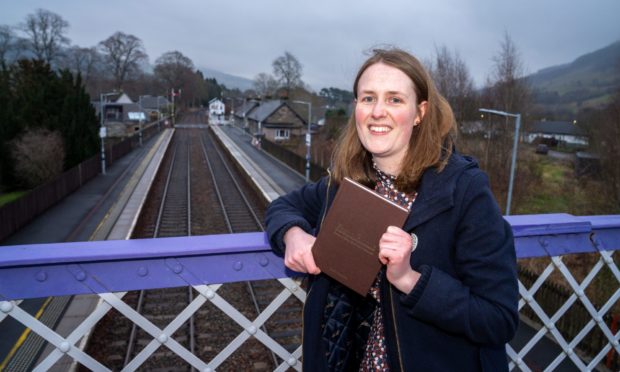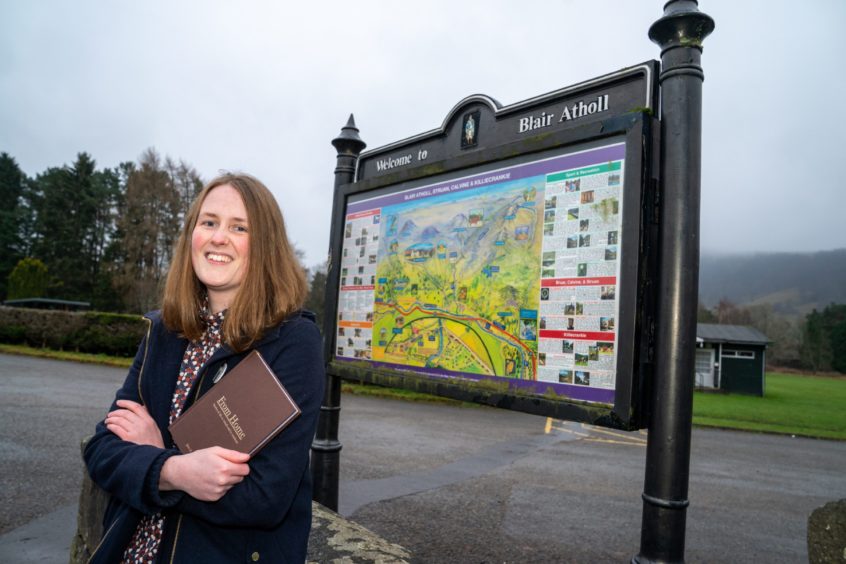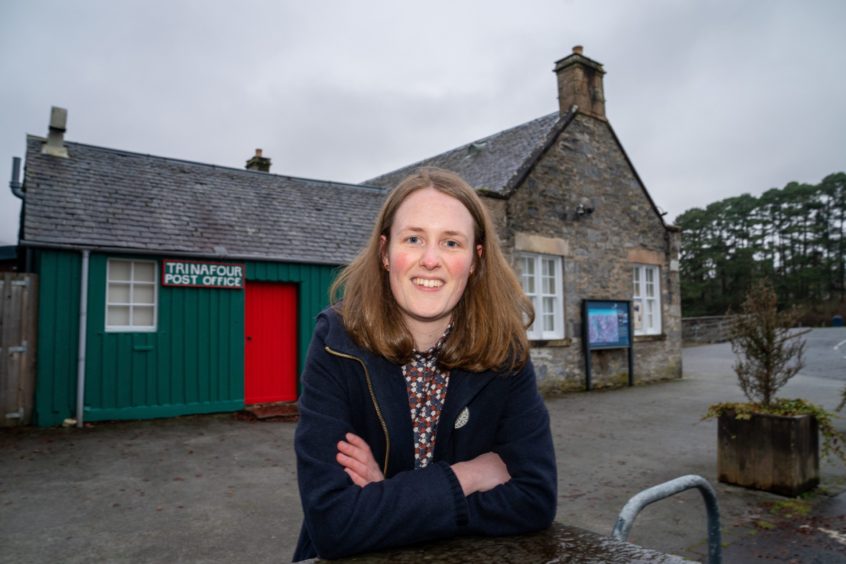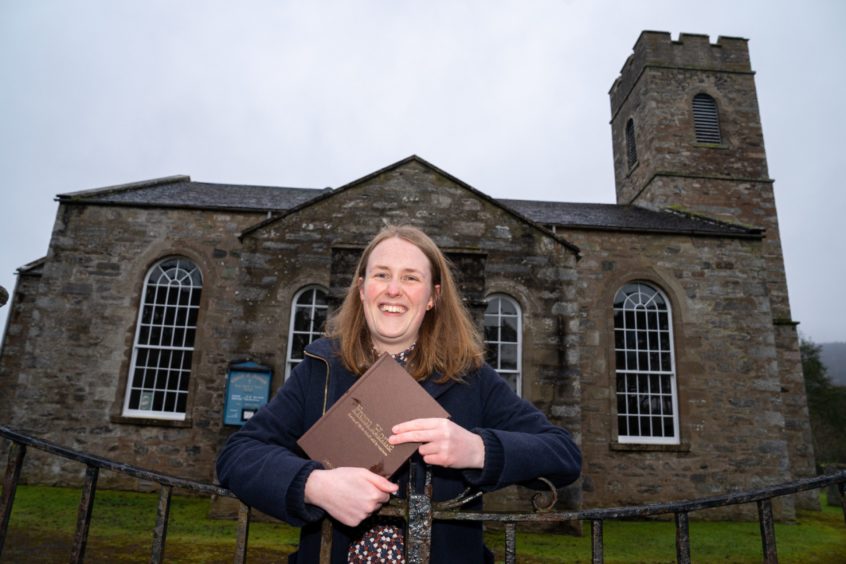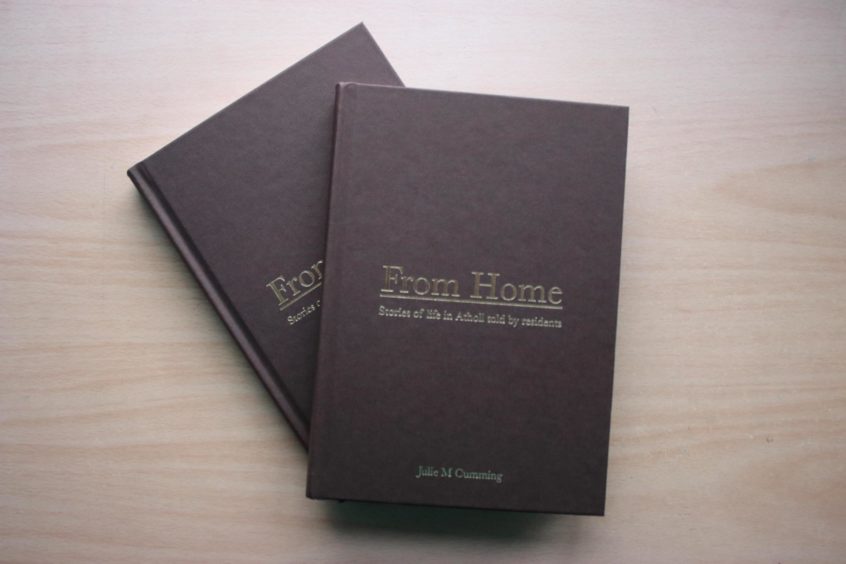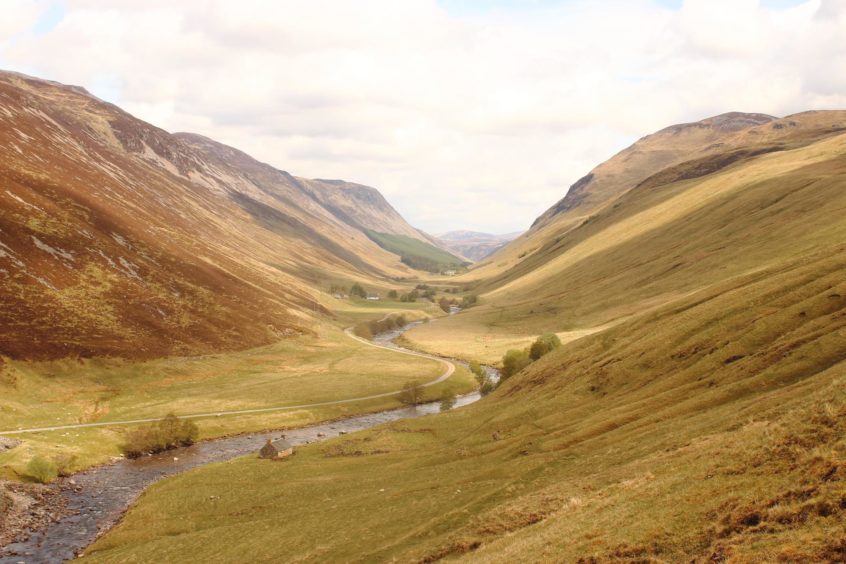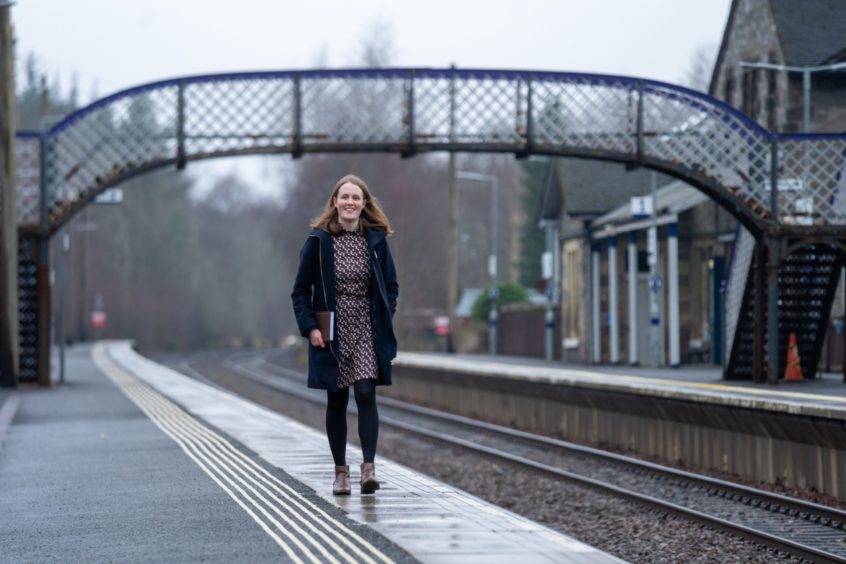Social distancing restrictions have brought the curtain down on the majority of artistic and cultural activities this year.
But, for one creative Scot, the impact of the pandemic has provided momentum for her to produce a new book about the history of the region where she has grown up.
Julie Cumming’s From Home documents the vibrant social history of Blair Atholl through a series of virtual interviews with residents all the way from Killiecrankie to Kindrochet, with stories stretching from the 1930s to the present day.
First-hand accounts of everything from personal curiosities to well-known events are brought together in the work as a celebration of the area and its forgotten tales.
And the versatile 24-year-old has also captured a plethora of evocative photographs, which bring a sense of space to the stories told by more than 25 local residents.
Bringing the past back to life
The initiative was created, compiled and photographed by the effervescent Dundee University graduate, in an effort to record and celebrate a rich vein of arcane stories from rural Scotland.
She has lived in Blair Atholl since the age of three and, during the past often difficult year, has been conducting interviews and collating images of her surroundings, whilst adapting to the ever-changing climate and lockdown.
She explained: “The idea behind From Home was to capture the social history of the past century in the fascinating area of Atholl through the people who lived through it.
“This project aims to connect people through memories and act as an inspiration for the new generation of people who are making their lives in Atholl, ultimately pushing the importance of stories and memories in rural communities.
“Rural Scotland’s beauty is found not only in its landscapes, but also in the stories of people who make their lives there, and From Home makes the time to listen to these stories and champion them.
“Many members of the community in Atholl have been involved, which has acted as a connection between people who were becoming disconnected as times changed.”
Memories of the Coronation and collecting the milk
Julie has allowed her subjects to tell their own stories and gradually, as they reel back the years, the book develops into a compendium of quirky memories and anecdotes.
It’s part Dibley, part All Creatures Great and Small with a soupçon of Sunset Song and the occasional vignette straight from Monarch of the Glen.
Libby MacRae, for instance, grew up in Blair Atholl and vividly recalls some of her early experiences, including one potentially scary incident for her dad.
She said: “When my father was the chauffeur, the milk came up to the hotel from Clunebeg Farm. My father went down on pony and trap to collect the milk.
“One day, he was coming home, and the fire engine was coming up from Pitlochry, blaring noises and it spooked the pony.
“The pony started galloping, and my father’s cart was out of control. And it didn’t stop until they got to the Atholl Arms Hotel again!”
Another of Julie’s interviewees recollected a memorable sporting achievement which gained him a princely sum during a memorable summer.
Bill Fyfe said: “In 1953 – the Coronation year – a big do was held in Blair Atholl Park. The top attraction was a hill race up Tulloch Hill, with prize money of £20 which was a lot of money in those days.
“Taking part was the top running man, Bert Kieller, plus boys from Strathtay Harries, about 30 in all…and well, the winner was Bill Fyfe!
“I got £5 from my dad and split the prize with Kyle Grant. And then my boss Peter Gow said: ‘Laddie, I did not think you had that in you’.”
The cast list of characters clearly relished being able to share their memories and take a trip back to past decades. A sense of brio and bonhomie is never far from the surface.
And consequently, the pages bristle with activity, excitement, grand occasions and the remembrance of Christmas Watchnight services and the sound of Still the Night.
There are newcomers who arrive in Blair Atholl from Stornoway, from Inverness and as far afield as Israel, and they all tell different stories about adapting to the pace of life.
Love shines through the stories
Julie is pleased at how she has recorded a wealth of information about Glen Tilt, Blair Atholl, Killiecrankie and so many other places which are often just names in a map.
She has also accumulated insights into every aspect of rural existence: be it the joys of community gatherings or the problems caused by winter weather in remote glens.
One thing that is constant throughout the venture is the love for the area of Atholl, which resonates in all the narratives of her book.
Neil Mackintosh, another of the contributors, said: “Julie approached me a few months back asking if I would contribute to a book she was planning to write.
“This would be a compilation of local people’s stories…mostly of their younger days living in the village. Although I doubted if my stories would be worthy of such a book, I was more than happy to oblige.
“Today, the book is about to be printed. Like many others in the village, I look forward so very much to opening the pages and starting to read it and enjoy it.”
Julie talks about bringing the book to fruition
Julie Cumming is one of life’s little coiled springs.
Oblivious to the problems posed by an unprecedented pandemic, she decided to turn adversity to her advantage.
Boosted by support from Creative Scotland and with the seeds of the book already in her mind, she has worked tirelessly in recent months to make it a reality.
She told me: “When I put out an open call for submissions in November last year, I focused on gathering stories from those who had called Atholl home for more than 15 years, to truly get a sense of how the area has changed in the last century.
“There are people of all generations in From Home, starting with stories from a resident who was born in 1929, and finishing with the recollections of a gentleman who moved to Blair Atholl in 2001.
“With lockdown in March came some changes to the project. Of course, interviews and conversations could no longer be conducted in the welcoming warmth of peoples’ homes: instead, we conversed through letters.
“This slowed down the process, but surprisingly added a real sense of excitement, waiting to see when letters would arrive and what stories they would contain.
“I spent my time getting out into the sun and taking photographs, whenever the lockdown measures allowed.
“I was immersed in the peace and beauty of my surroundings as I photographed and wrote From Home, which I think has come through in the book.
“It would be impossible to pick a favourite story. All of the 27 narratives in From Home bring a different element of life.
“I asked the same three questions to every interviewee, which resulted in them telling me whichever stories they felt were most important, or wanted to share.
“This element of self-direction in the conversation provided for a great mix of stories. That said, growing up in Glen Tilt, I find that I can especially relate to the stories told of childhood in the glen and all of its wonders.
“I have learned so much about not only the area of Atholl, but also about the people I know here. It has been wonderful to build a closer bond with people through their stories and to be part of the effort to capture these memories.”
Libby’s stories of temperance and ladies undergarments
Libby MacRae emerges as one of the funniest personalities in Julie’s new work.
She evokes some of the bemusement which she felt while attending a temperance rally as a very young child.
As she recalled: “The Band of Hope was a national movement and it was in the old St Andrew’s Church Hall. There was usually a Minister came and, aged five or six, you were standing up and saying about not drinking alcohol: ‘I promise, by God’s help, to abstain from all intoxicating liqueurs and beverages.’
”At the age of six and to be drilled with ‘Learn to say NO!’ I didn’t even know what a beverage was and it was so confusing when you were young….but that was life.”
Mrs MacRae offered one final thought which sounds like a perfect seaside postcard.
She added: “There was a great joke in the village. John Campbell [who ran a Ladies and Gents Outfitters] used to work in the back shop and do tailoring repairs and such and Aggie [Campbell] was in the right hand side.
“A lady went in to buy underwear one day and, as Aggie was quite a small lady, she called through the back and said: ‘John, would you come through and take down the ladies’ knickers!'”
There’s just no following that, is there?
